Hawaii Flora


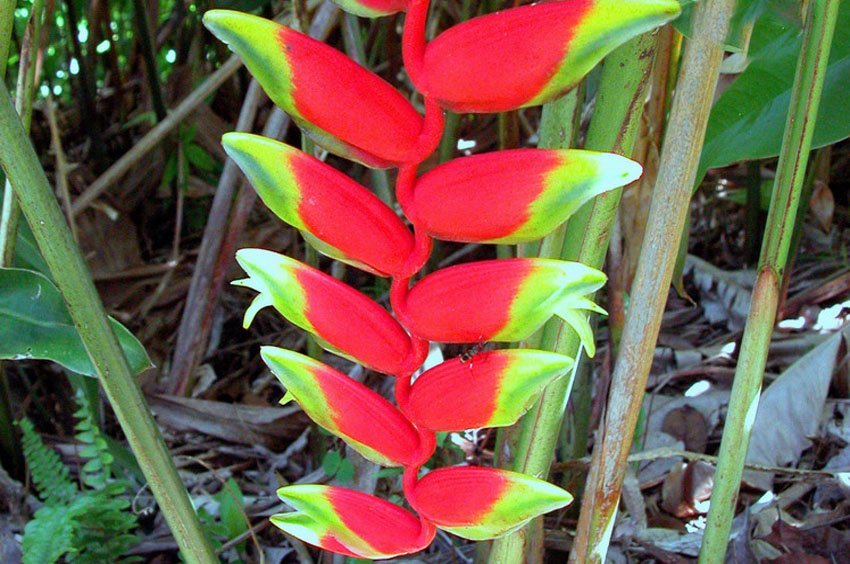
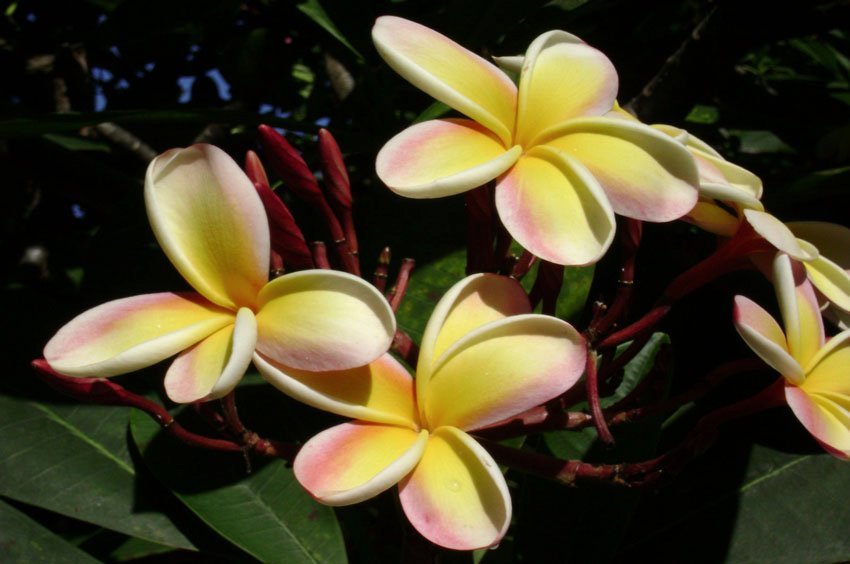
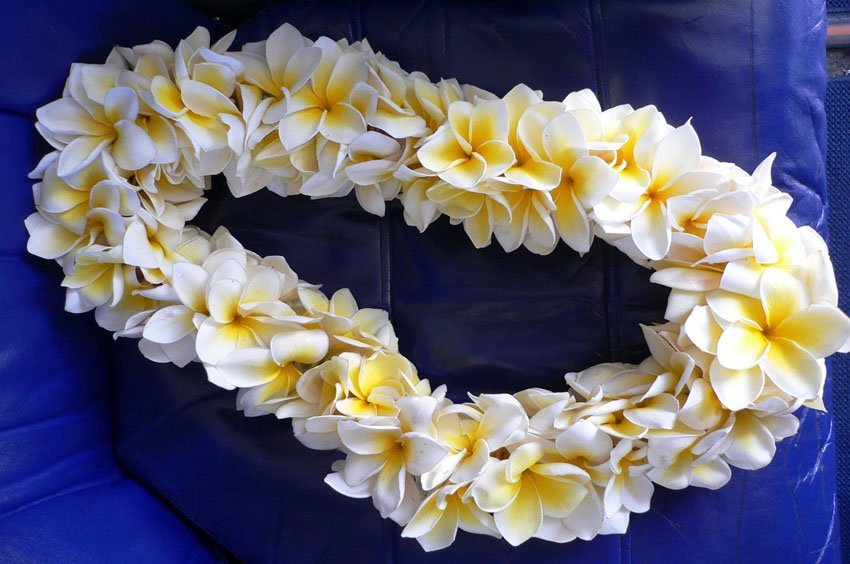
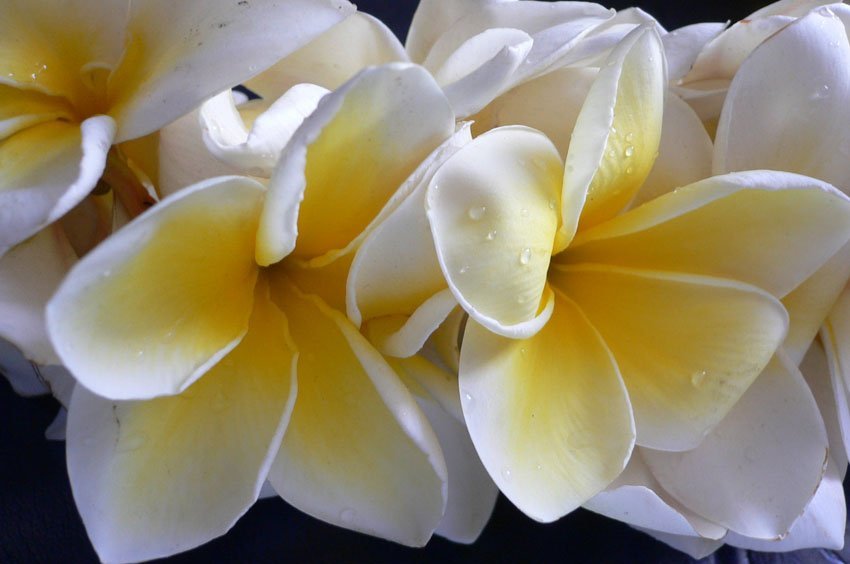
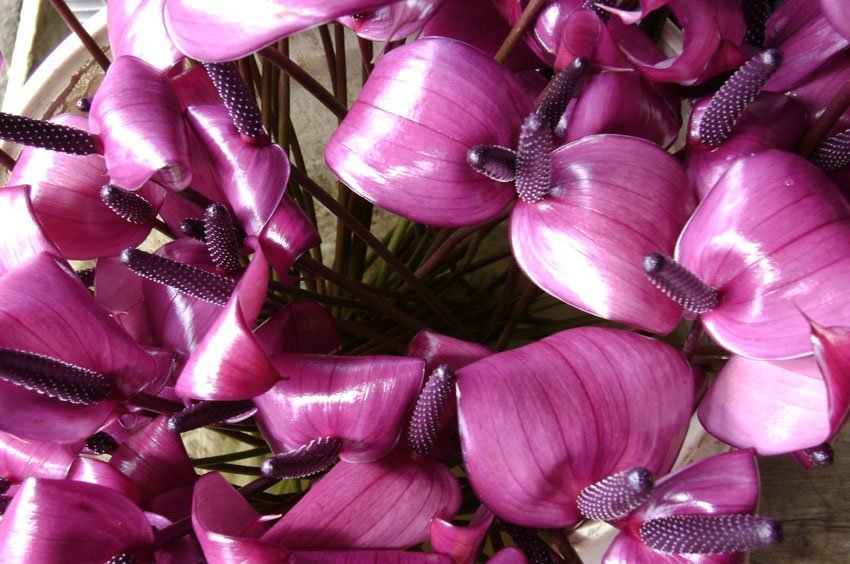

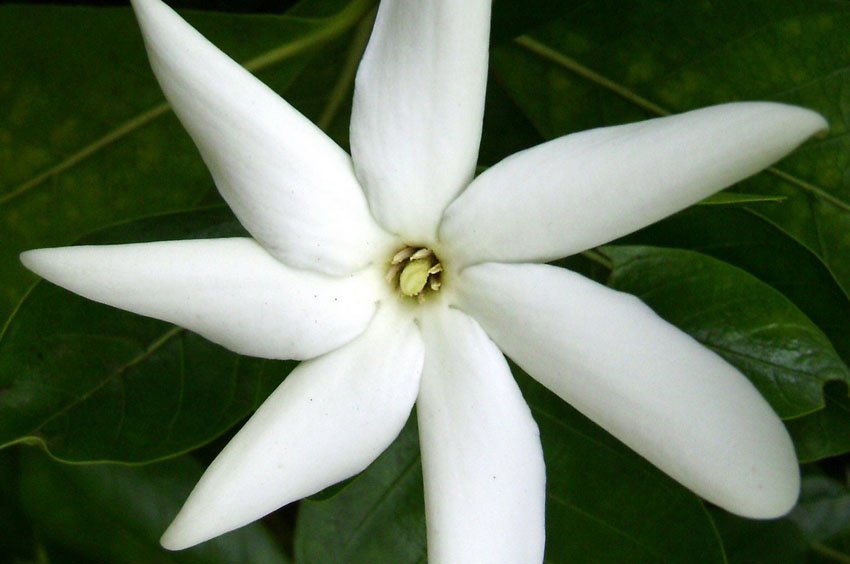
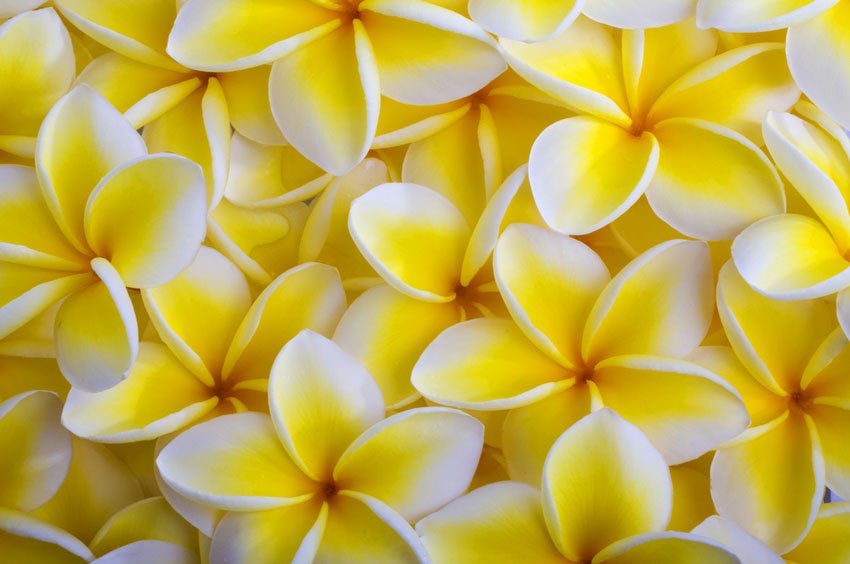
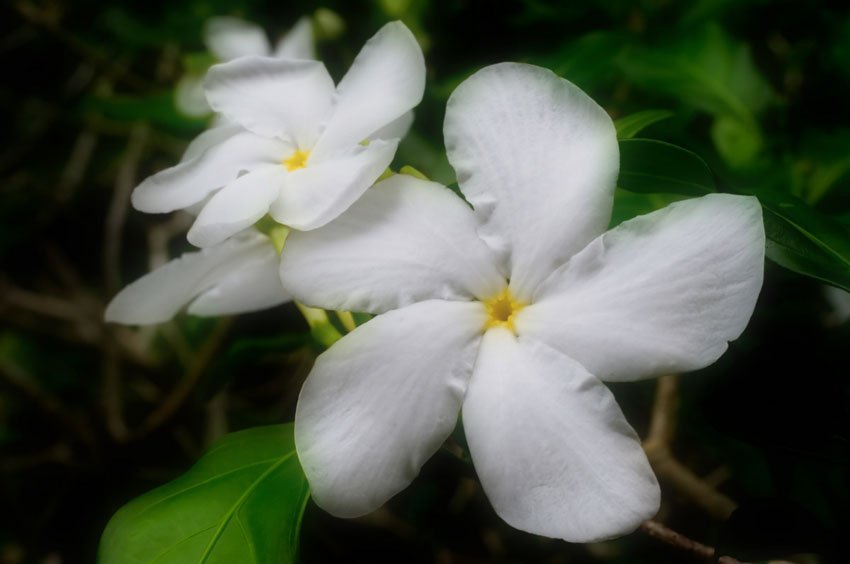
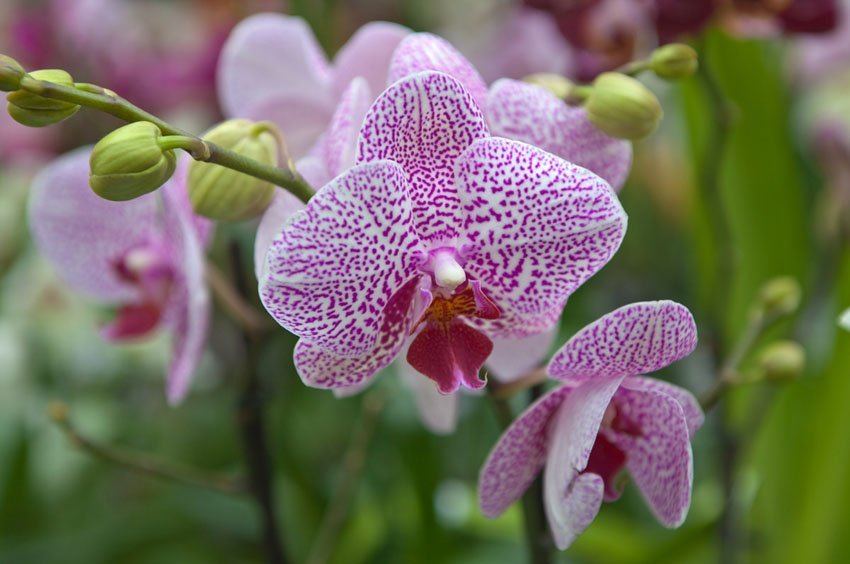
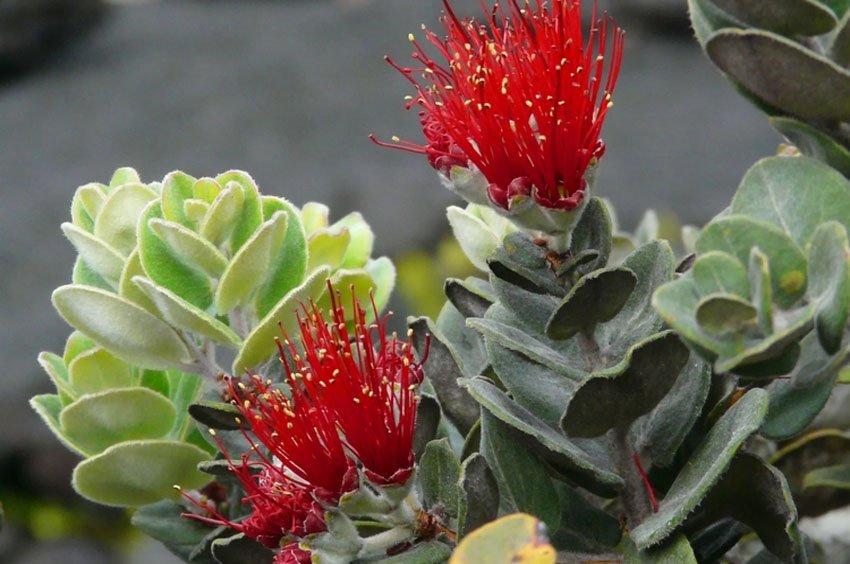

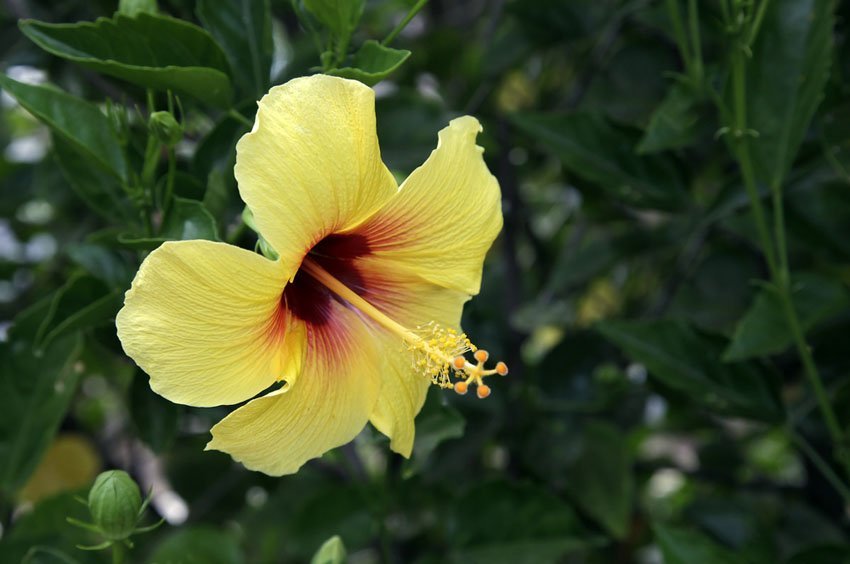

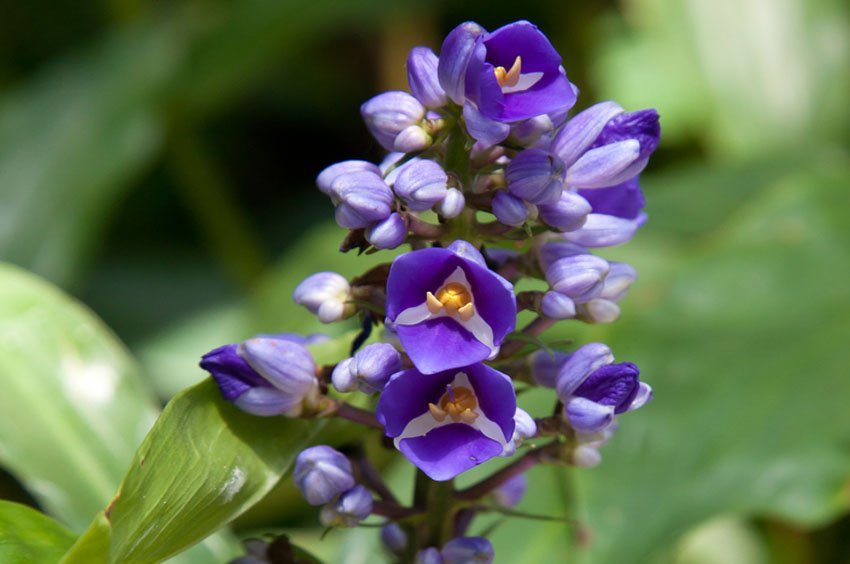

Flowers and plants in Hawaii
Hawaiian flora is beautiful and diverse. A subtropical region, Hawaii has a year-round warm climate and soil heavy with volcanic ash - two elements that play a role in the healthy growing of a wide variety of flowers and plants. There are three categories of Hawaiian flora – endemic, native and introduced. Endemic refers to those flowers, plants and trees found only in Hawaii. These are the flowering and non-flowering plants and trees that were brought to Hawaii by natural means, such as wind, tides and birds. Native refers to those species occurring in the Hawaiian Islands, but found elsewhere in the world. The third category includes foreign or introduced plant species. These are plants brought to Hawaii by people.
Long before the human settlement of the Hawaiian island chain, the Islands were devoid of plant or animal life. Over thousands of years seeds, insects and birds made their way to the Hawaiian archipelago. Populating the Islands this way was slow - it is estimated that only one plant every 90,000 years was added to the Hawaiian landscape.
The early Polynesian voyagers who arrived in Hawaii around AD 500-800 brought plants with them that they needed for food, such as breadfruit, taro, banana, sweet potato and sugarcane. Other plants they brought were needed as building materials, such as the ti plant to make clothing. Later settlers brought mangoes, papayas, pineapples, passion fruit and a variety of vegetables, as well as flowers, including plumeria, orchids, protea, heliconia, ginger, jasmine (pikake) and hibiscus.
The arrival of early settlers in Hawaii with their plants and animals affected the Hawaiian flora in two ways. On the one hand, it led to a more diverse Hawaiian flora. New plant species were introduced and grew on the Islands. On the other hand, it led to the disappearance of many endemic varieties. Some introduced plant species are fast growing and lead to a crowding out of native and endemic species. These introduced species are also called invasive species. Unable to adapt to the changes in the surroundings, many endemic plants gradually died and disappeared over time. From the onset of human settlement in the Islands, it is estimated that one endemic plant vanished every nine months.
Of the 50,000 Hawaiian endemic species, only 2,600 remain today. Of these 2,600 remaining endemic species, roughly 30% are endangered according to the U.S. Fish and Wildlife Service (USFWS). In 2003, the USFWS listed 273 endangered native plants. Of the world's endangered plant species, half of them are found in Hawaii according to the U.S. list.
Hawaiian Trees
Trees grow in rich diversity in the Islands. Two endemic Hawaiian trees are koa and 'ohi'a. The koa tree (Acacia koa) is the oldest known tree in the Islands. It is one of the tallest trees in Hawaii, reaching heights of up to 70 feet (21 m) and measuring around 10 feet (3 m) in circumference. The tree has a very sturdy wood and has many uses. The Hawaiians used the trunk of the tree for boat- or canoe-building. Because koa is resistant to saltwater, it can also be used to make surfboards. Also known as Hawaiian mahogany, this tree is referred to as the king of the forest. Up until today, koa is considered a superb furniture wood. Hawaii used to be copiously populated with koa trees, but today they are mainly found in reserves. To protect the remaining koa trees in Hawaii, there are some koa plantations that are used for commercial purposes, including the making of souvenirs.
The 'ohi'a (Metrosideros polymorpha) is the most abundant endemic tree species in Hawaii. This tree species grows in a variety of sizes. The tallest ones can reach heights of up to 100 feet (30 m) and are typically found at the higher and cooler elevations. The main characteristic of the 'ohi'a tree is its orange-red flower (occasionally it can also be yellow or white). According to an ancient Hawaiian legend about the fire goddess Pele, the 'ohi'a flower is sacred. Hawaiians used 'ohi'a wood to build canoes and dishes, such as poi bowls.
Below is an overview of flowers and plants in Hawaii. In addition you can also see our guide to trees in Hawaii.
Hawaii Flowers and Plants
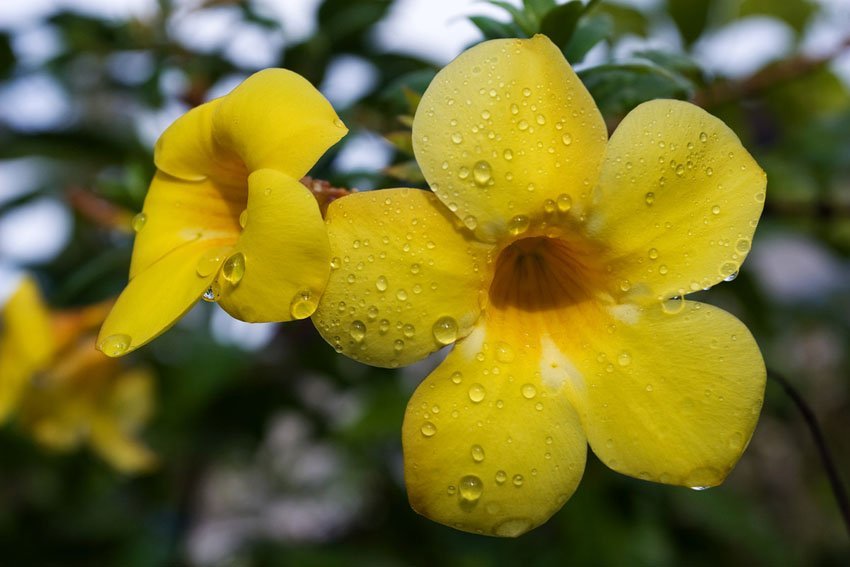
Allamanda (Allamanda cathartica)
This is a sturdy vine with firm and shiny leaves. Allamanda blooms continuously and can grow to a height of 50 feet (15 m). However, it needs a fence or trellis for support, as well as well-watered soil.

Amaryllis Barbados Lily (Hippeastrum puniceum)
Native to the American tropics, the amaryllis grows in moist Hawaiian pastures. One common type of amaryllis is the “Pink Lady.” There are more than 70 species of this plant.

Anthurium (Anthurium, various names)
Anthurium is a popular cut flower. It was brought to Hawaii in 1889 by S.M. Damon from England. It grows best in humid conditions and needs protection from sun and wind.
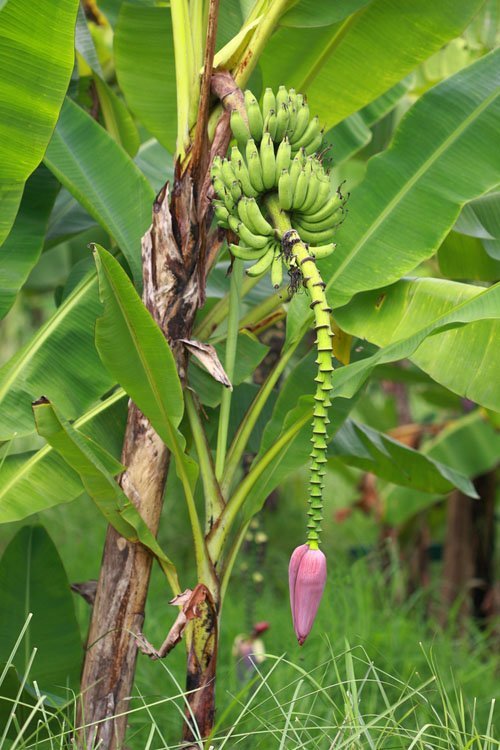
Banana Blossom (Musa x paradisiaca)
Most people are familiar with the banana fruit, but not so much with the plant's blossom. It is a pretty purple flower. There are hundreds of varieties of this plant. The main part of the banana is underground.

Beach Naupaka (Scaevola sericea)
Naupaka is Hawaii's most common beach plant. The flowers are yellow-white in color. After the flower forms, it splits along one seam and then fans out, which makes it look like half a flower.

Bird of Paradise (Strelitzia reginae)
The Bird of Paradise is native to South Africa. People who speak English in Europe and Africa call it Cranes Bill or the Crane Flower. It is a close relative of the banana and the heliconia.
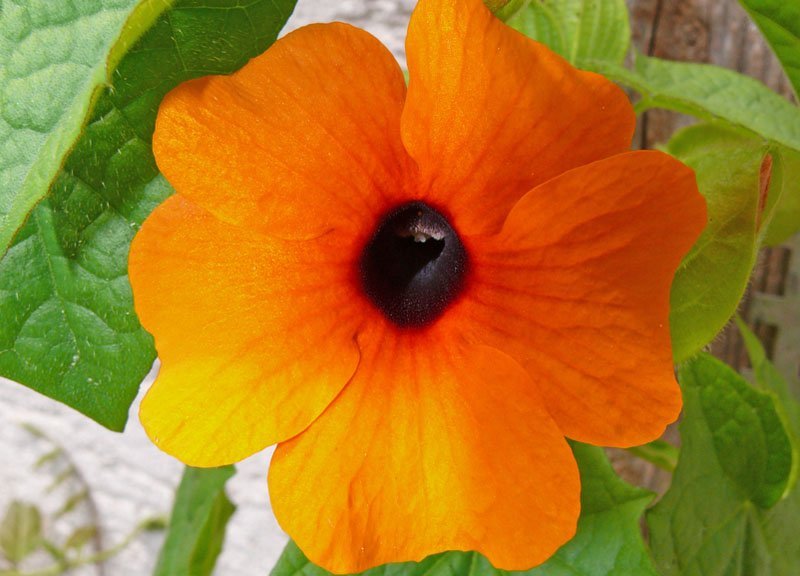
Black-Eyed Susan (Thunbergia alata)
In Hawaii, this orange or yellow flower with a purple center can be seen on many hillsides. It is a vigorous vine that grows quickly. Black-eyed Susan is a native of Africa.

Blue Ginger (Dichorisandra thyrsiflora)
Blue Ginger has shiny green leaves and nice purple-blue flowers. It grows on stems that are between 3-6 feet (0.9-1.8 m) tall. It is a relative of the wandering jew and the spiderwort plants.
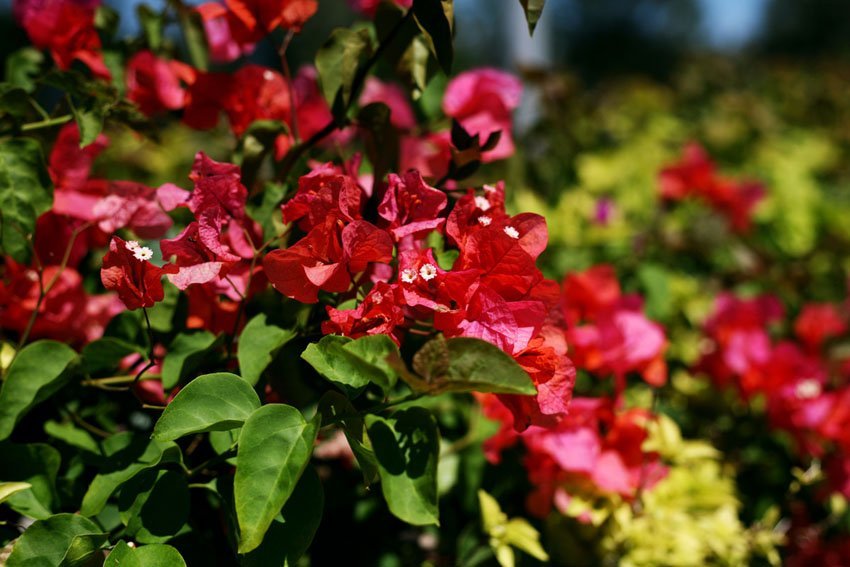
Bougainvillea (Bougainvillea, various names)
Bougainvillea grow well in a hot and dry climate. In Hawaii, they can be seen in many leeward coast communities. Bougainvillea don't need much water and love sunny weather.

Canna (Canna indica)
Canna was brought to Hawaii shortly after Captain Cook's arrival in the Islands. The seeds are used for making leis and musical instruments, such as rattle-beads. The plant grows in Hawaii's wet forests.
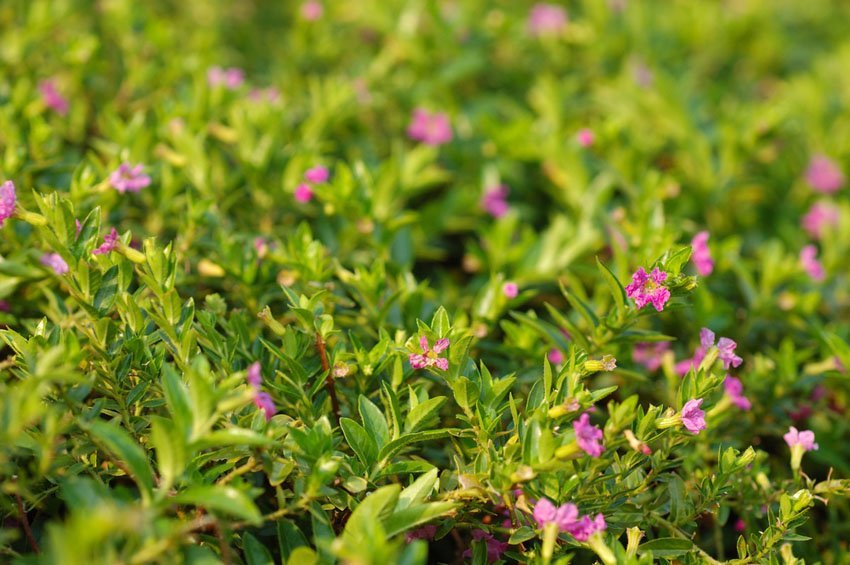
Cigar Flower (Cuphea ignea)
This tight-leaved shrub has many tube-shaped red flowers. The plant's name refers to the flower's ash-colored tips. Hawaiians grew this plant beginning in the mid-19th century as a lei flower.
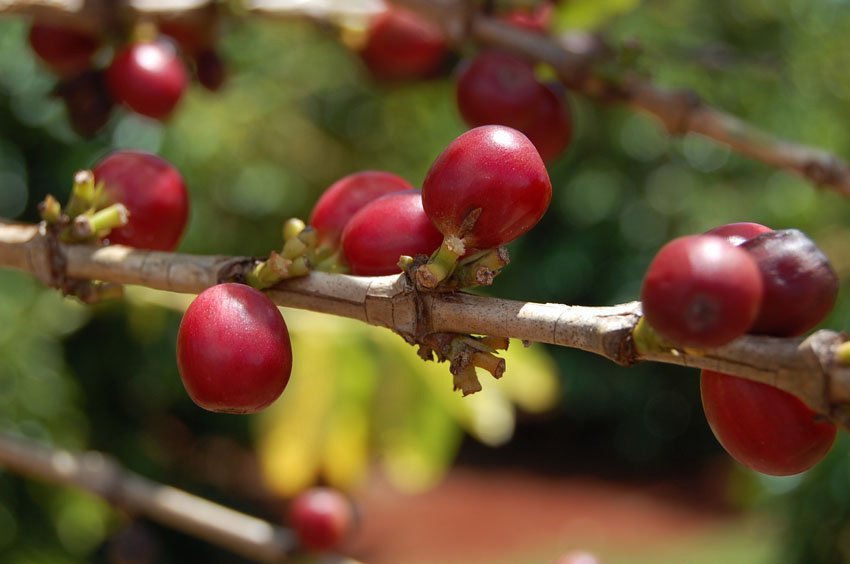
Coffee (Coffea arabica)
Coffee was first brought to Hawaii in 1823 and planted in Manoa Valley on Oahu. Today, coffee is grown on Oahu, Kauai, Maui, Molokai and the Big Island. The Big Island has more than 600 coffee farms.
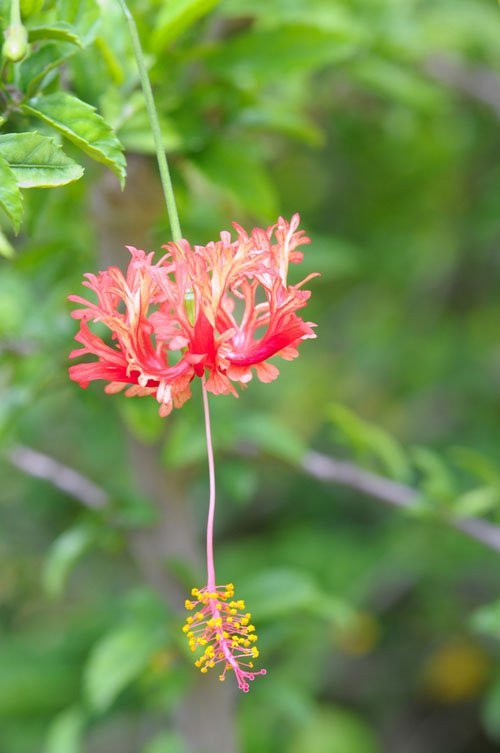
Coral Plant (Hibiscus schizopetalus)
Native to east Africa, the coral plant is a shrub that grows hanging red flowers. The flower's petals are divided into frills, which curl back and expose the long red staminal column and its curving tip.
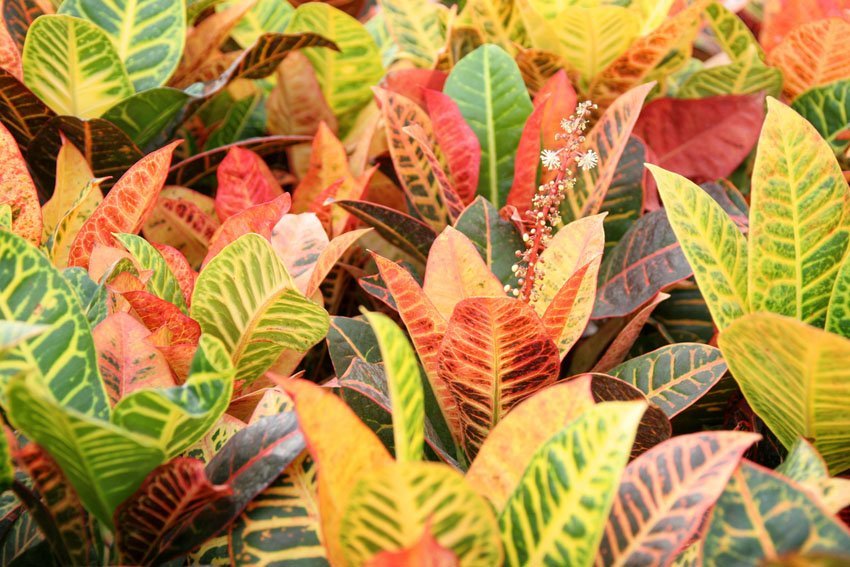
Croton (Codiaeum variegatum)
Croton plants are known for being robust, dependable shrubbery. In Hawaii, the colored-leaf varieties are the most commonly seen yard plants. The leaves have a variety of colors.
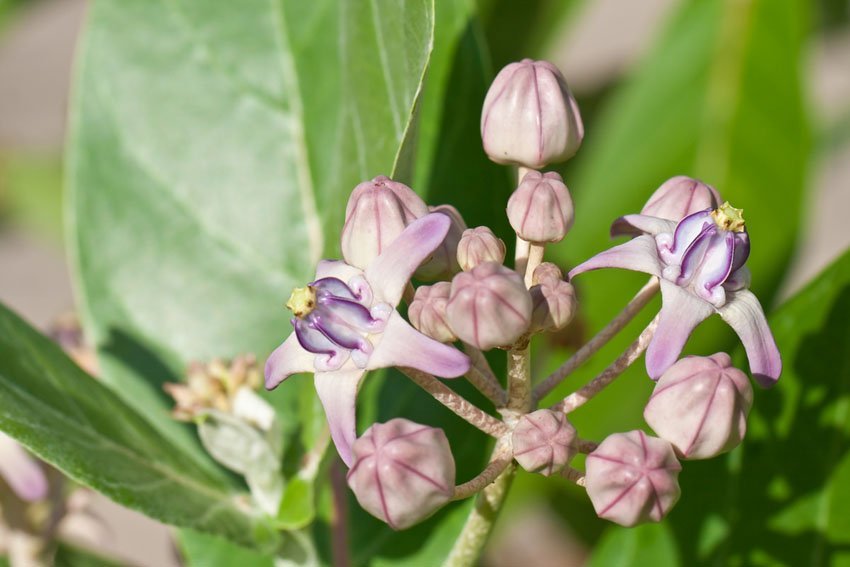
Crown Flower (Calotropis gigantea)
The crown flower has blossoms that are used in lei-making. Crown flower leis have royal symbolism. The blossom's petals roll back and expose what looks like a small crown.
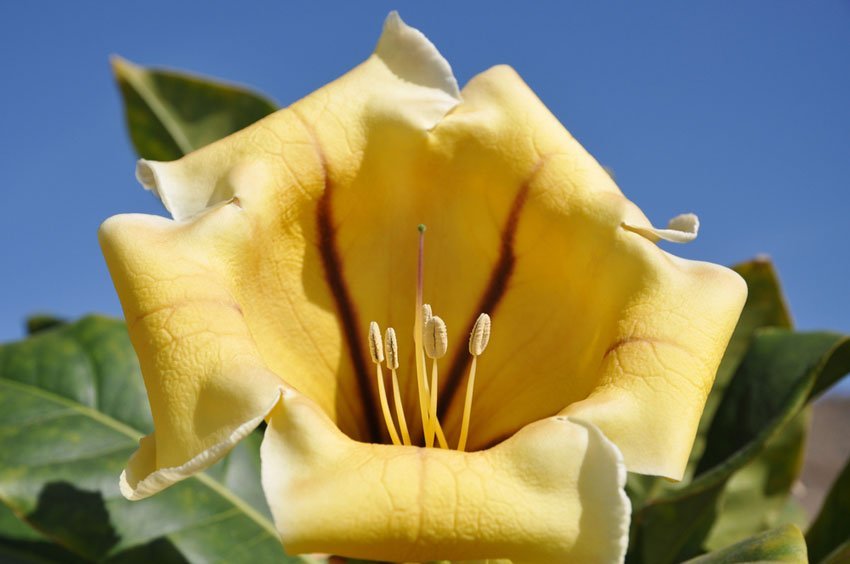
Cup of Gold (Solandra maxima)
This is a fast-growing vine that prefers a humid climate, such as rainforests. Its name refers to the large up to 9-inch (23 cm) wide yellow blossom. It is streaked with purple and emits a sweet scent.
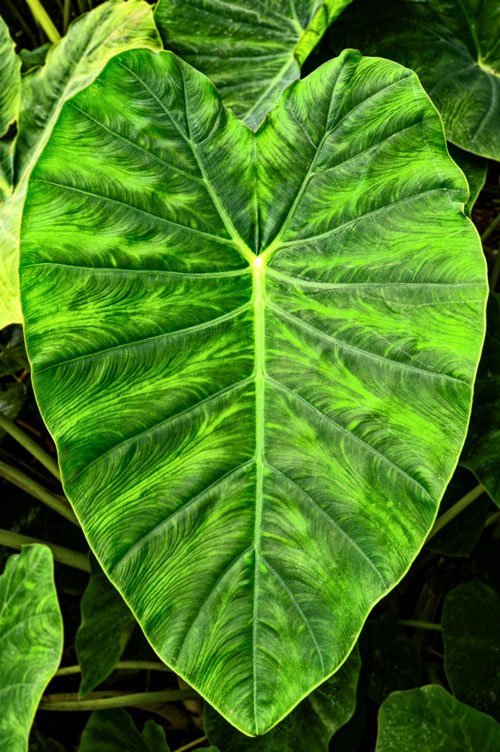
Elephant's Ear (Alocasia macrorrhiza)
Polynesian navigators brought this plant with them wherever they traveled. Its stem can be baked and eaten when no other foods are available. It is a native of India and Sri Lanka.
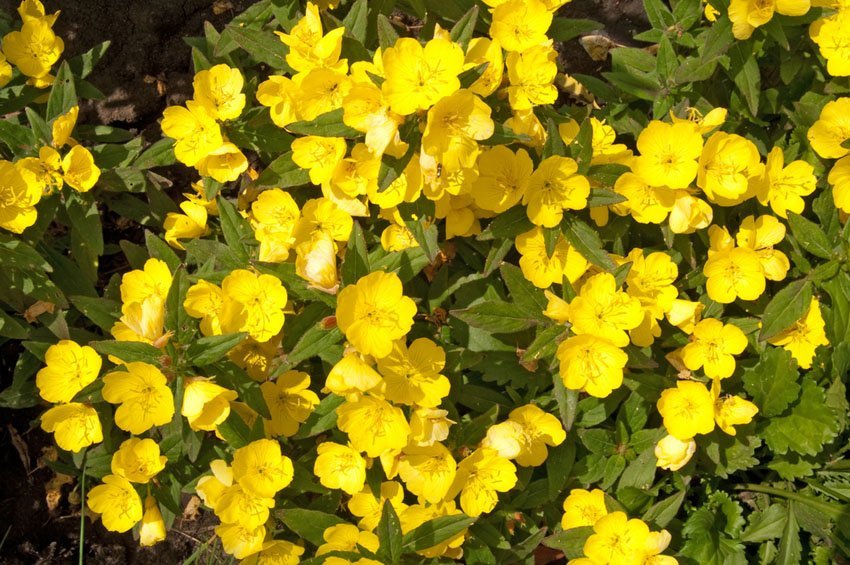
Evening Primrose (Oenothera)
The evening primrose can be found on all the Earth's continents except Antarctica. The flowers bloom each day around sunset. The following day the flowers turn red and fall down.
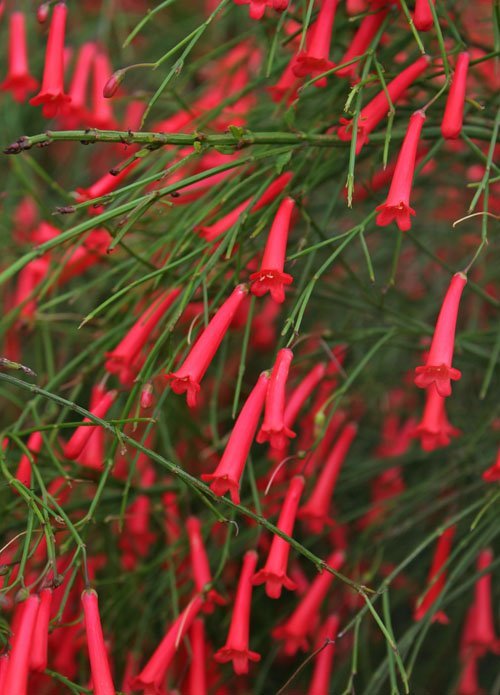
Firecracker Plant (Russelia equisetiformis)
This shrub grows up to a height of 4 feet (1.2 m) and rarely has leaves. Instead, it grows many tubular, inch-long flowers that look like red firecrackers. The plant blooms year-round.
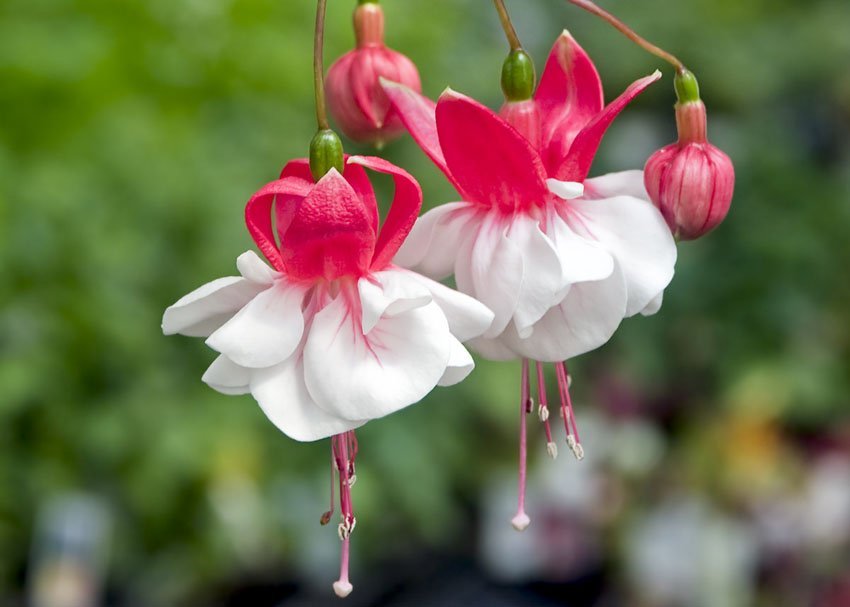
Fuchsia (Fuchsia magellanica)
Fuchsia's Hawaiian name, kulapepeiao, means “earring,” probably referring to the way the flowers dangle on the stems. Fuchsia can be found in Hawaii's wet forests and other damp areas.
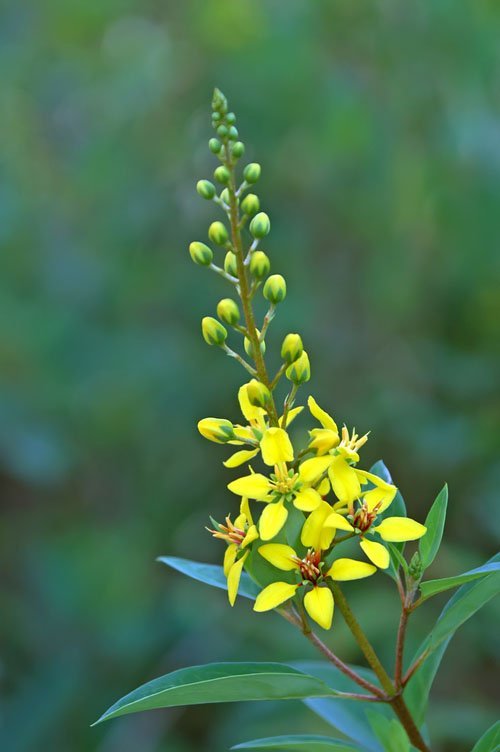
Galphimia Glauca (Malphigia)
This shrub grows bright yellow flowers with red stamens. It grows to a height of up to 6 feet (1.8 m) and produces flowers year-round. Its leaves grow in pairs and are about 2 inches (5 cm) long.

Gardenia (Gardenia jasminoides)
The gardenia are a favorite lei plant in Hawaii because of the sweet scent they emit. The plant, which is native to China, thrives in Hawaii. The shrub can reach a height of 6 feet (1.8 m).
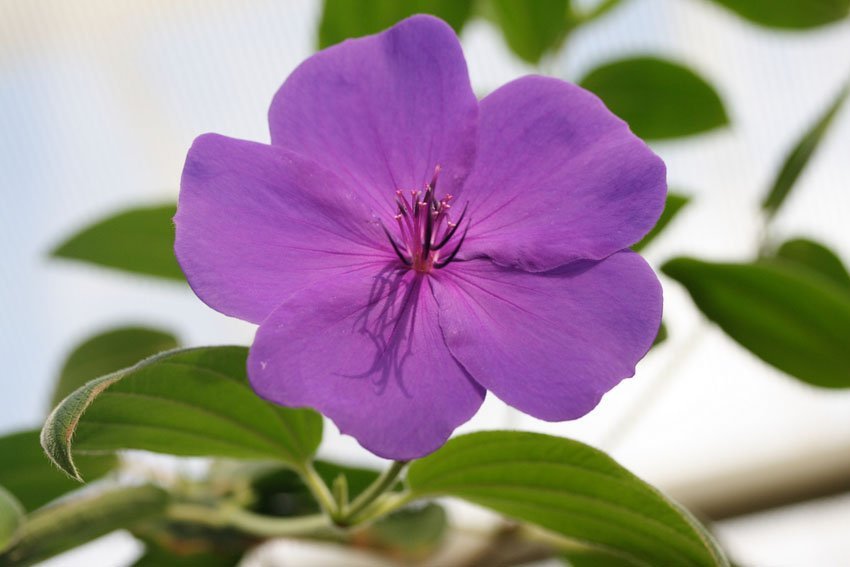
Glory Bush (Tibouchina urvilleana)
The glory bush is truly glorious and beautiful. The plant has deep purple flowers with red flower buds and green leaves with a silvery underside. Once it grows in one area, it likes to spread.
Heliconia (Heliconia, various names)
Closely related to the banana, the heliconia has a sturdy leaf stalk that can grow up to 20 feet (6 m) tall. The actual flowers are rather small, growing inside large, brightly colored bracts.
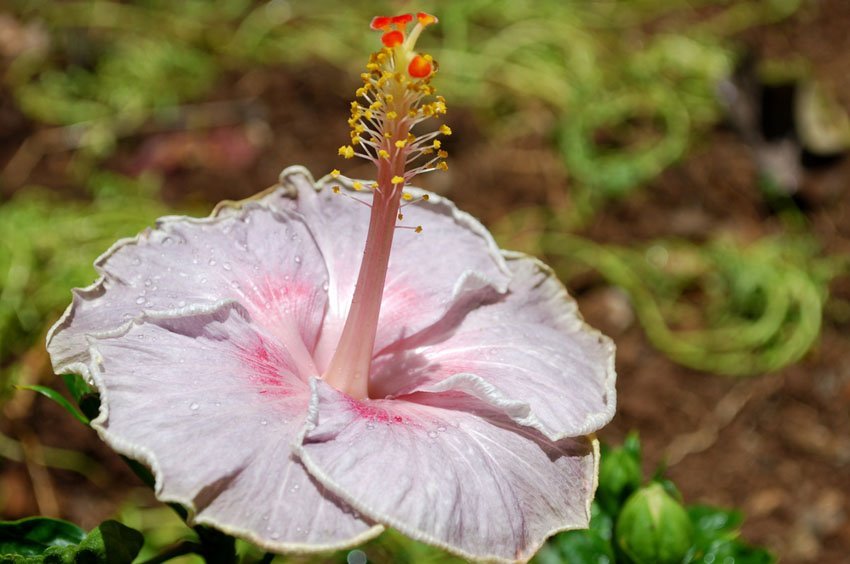
Hibiscus (Hibiscus, various names)
In 1923, the Territory of Hawaii passed a law that made Hibiscus Hawaii's official state flower. This native hibiscus species is known as ma'o hau hele in the Hawaiian language.
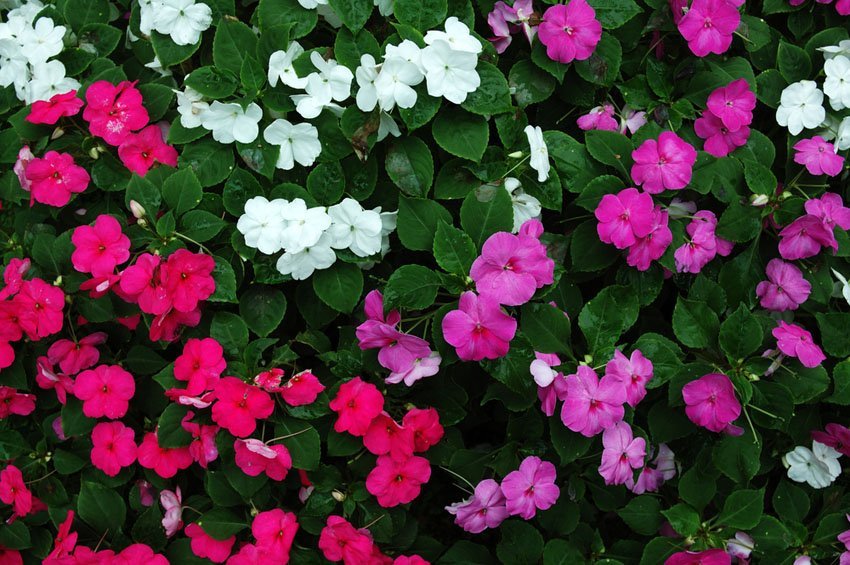
Impatiens (Impatiens wallerana)
Impatiens flowers measure about 1.5 inch (3.8 cm) across and have a thin, curving spur. As soon as the green fruit is ripe, it opens and scatters the seeds. The flower is also called “touch me not.
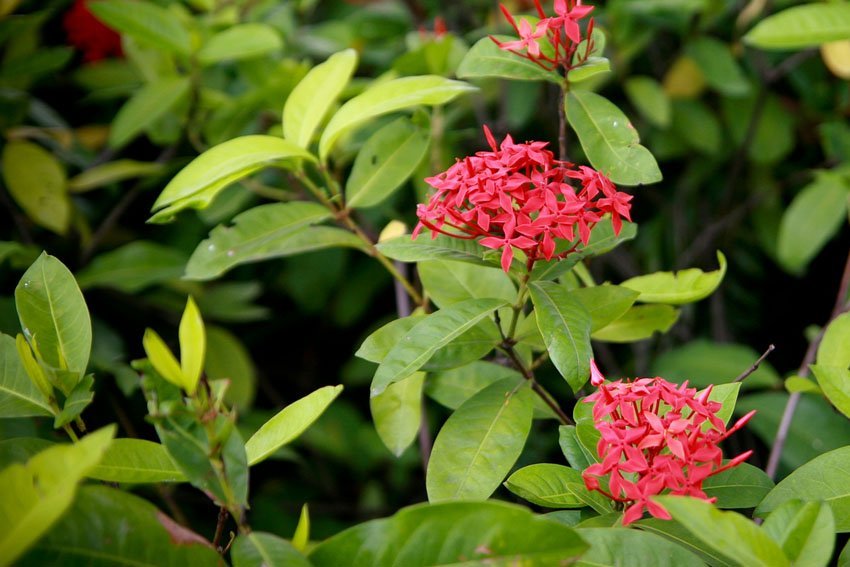
Ixora (Ixora coccinea)
Ixora is a popular landscaping shrub in Hawaii's coastal regions. Its bright red colors are a pretty sight. It also makes for a good cut flower and individual flowers can be strung into a lei.
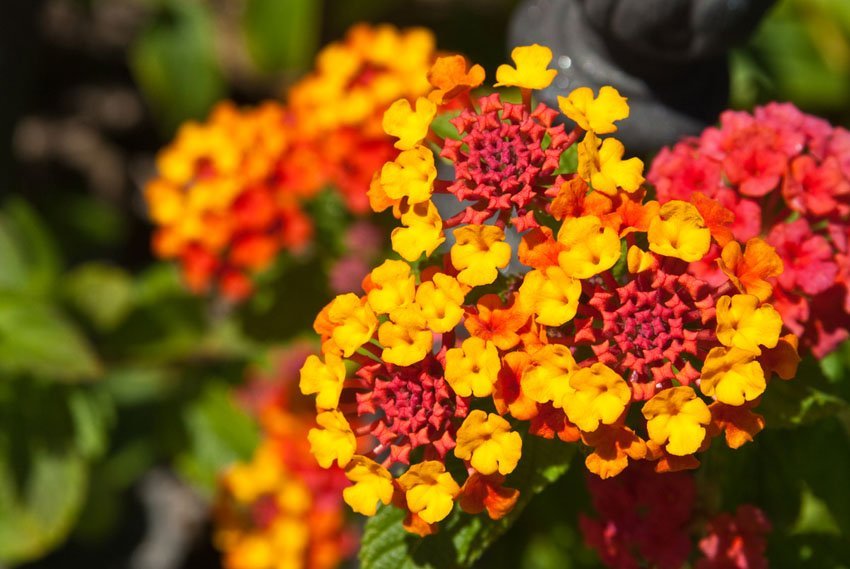
Lantana (Lantana camara)
Lantana is a shrub that blooms continuously. The bright yellow-orange flowers look pretty, but the shrub is armed with thorns and the plant often grows into an impenetrable thicket.
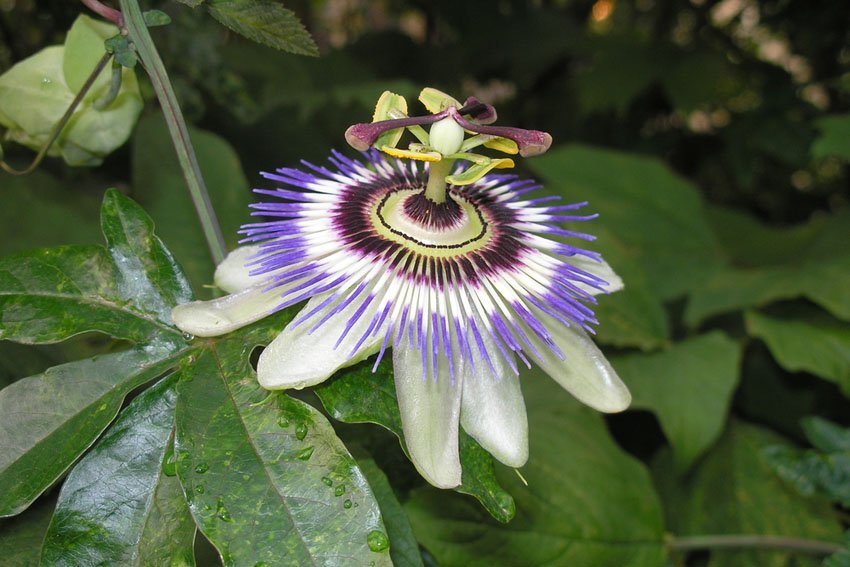
Lilikoi (Passiflora edulis)
There are at least 11 species of lilikoi in Hawaii, all of them are not native to the Islands. Two varieties produce an edible fruit, one of which has a purple rind and the other a yellow one.
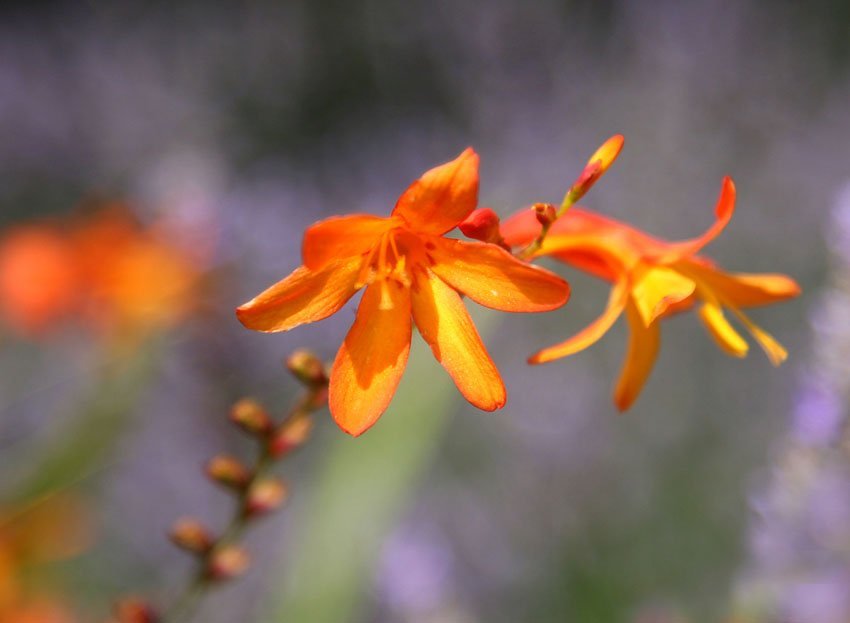
Montbretia (Crocosmia x crocosmiflora)
The bright orange Montbretia can be found on all Hawaiian islands. It is a hardy flower that doesn't produce fertile seeds. It reproduces itself via thick underground stems called corms.
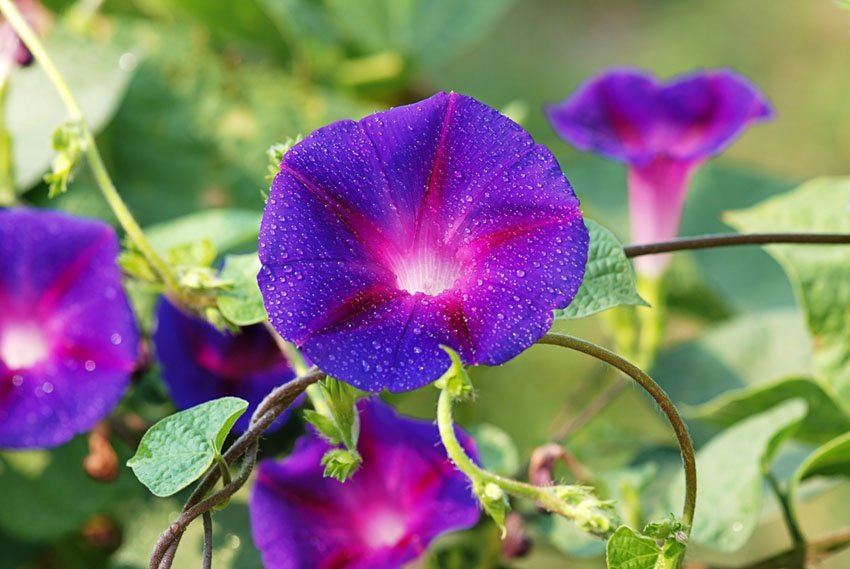
Morning Glory (Ipomoea, various names)
Ipomoea includes about 500 individual species. In Hawaii, 14 species are native. In the 19th century, Chinese immigrants brought the edible Ipomoea aquatica (also known as ung-choi in Asian cuisines) to Hawaii.
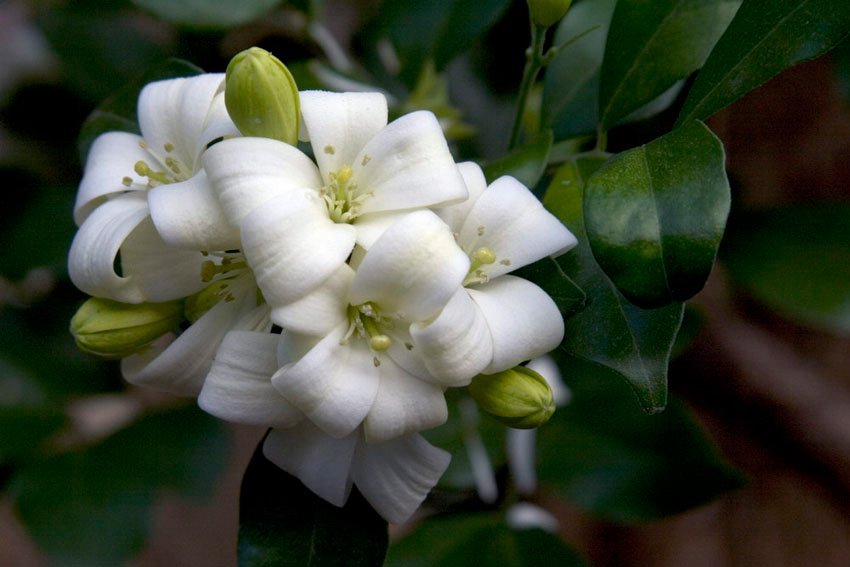
Mock Orange (Murraya paniculata)
Mock Orange is a shrub with thick foliage and sweet-smelling white flowers. The flowers typically bloom in summer and fall. It can grow to be as tall as a tree, but it is usually kept as a hedge about 6-8 feet (1.8-2.4 m) in height.
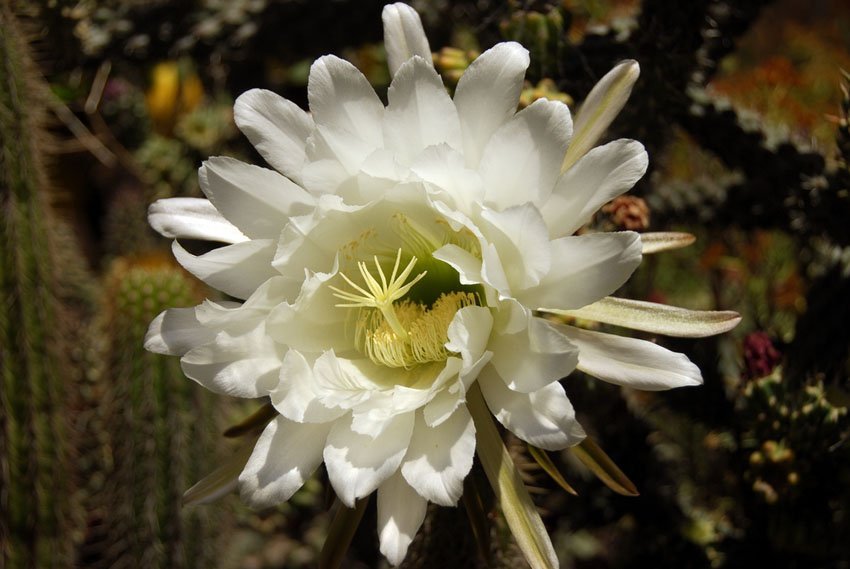
Night-blooming Cereus (Hylocereus undatus)
The first night-blooming cereus arrived in Hawaii in 1830 aboard the sailing ship Ivanhoe. The plant has a fleshy stem with aerial roots, which makes it capable of climbing up trees and walls.
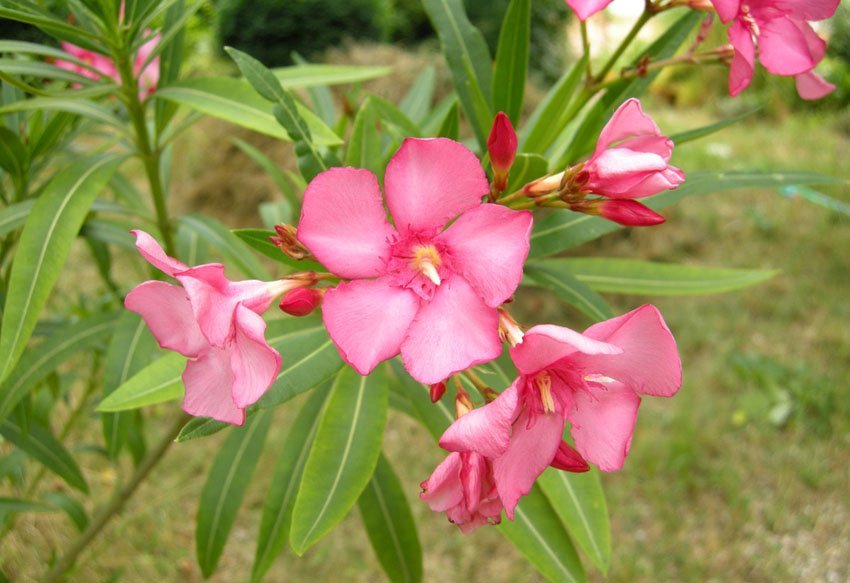
Oleander (Nerium oleander)
Oleander is a sturdy shrub that can easily handle wind, salt and even a drought. It is always blooming and because of this, it is a favorite in many gardens. Its flowers emit a sweet fragrance and can be pink, rose, red or white.

Orchid (Orchidaceae)
The orchid family includes more than 600 genera and comprises about 30,000 species. These species of orchid are very vibrant and they make great gifts. The most popular genera in Hawaii are the Dendrobium and the Epidendrum.

Persian Shield (Strobilanthes)
The Persian Shield grows well in Hawaii, but prefers shade. Its leaves have a nice purple-lavender color. This is a tropical plant that is native to Myanmar.
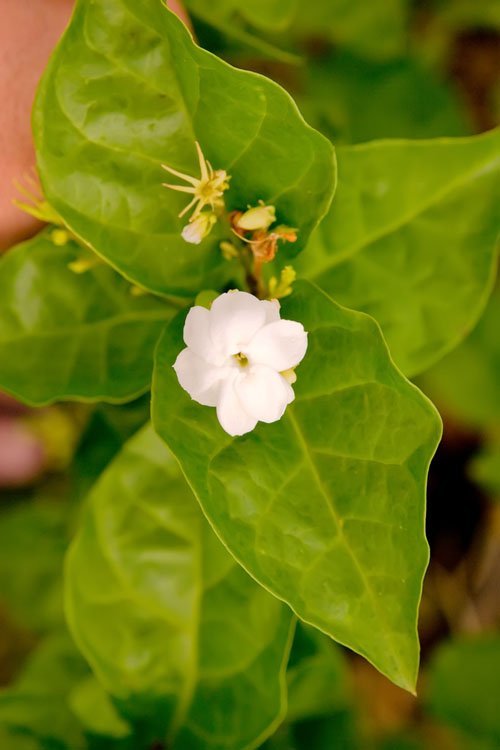
Pikake (Jasminum sambac)
Pikake is one of Hawaii's most popular lei plants. This kind of jasmine is known for its sweet scent. The Hawaiian name pikake, meaning “peacock,” refers to these birds which Princess Kaiulani loved.

Pineapple (Ananas comosus)
Pineapple was first introduced to Hawaii in the early 19th century. By the mid-20th century Hawaii was producing about 80 percent of the world's pineapple. The plant produces the first fruit after two years of being planted.
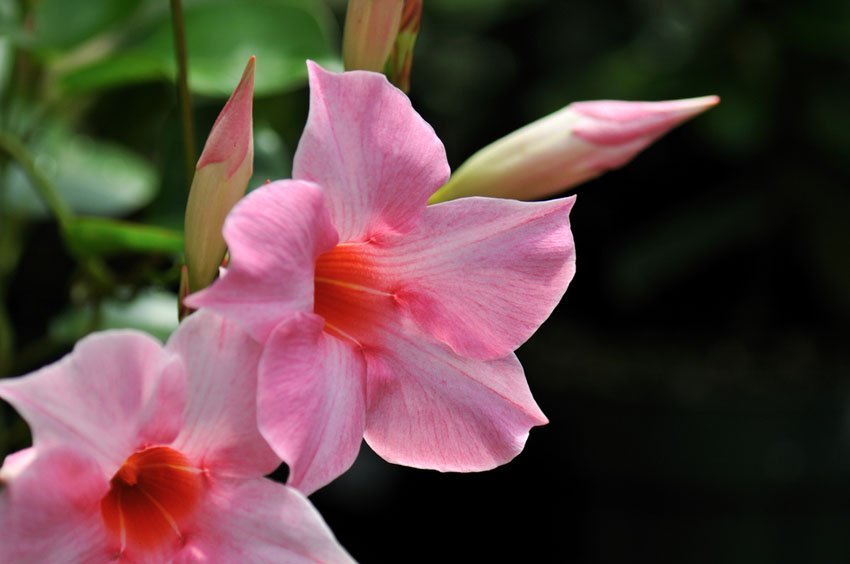
Pink Mandevilla (Mandevilla, various names)
The Pink Mandevilla is a beautiful flower but to grow nicely it needs a fence or trellis for support, as well as well-watered soil. But it rewards the gardener with pretty pink, bell-shaped flowers.
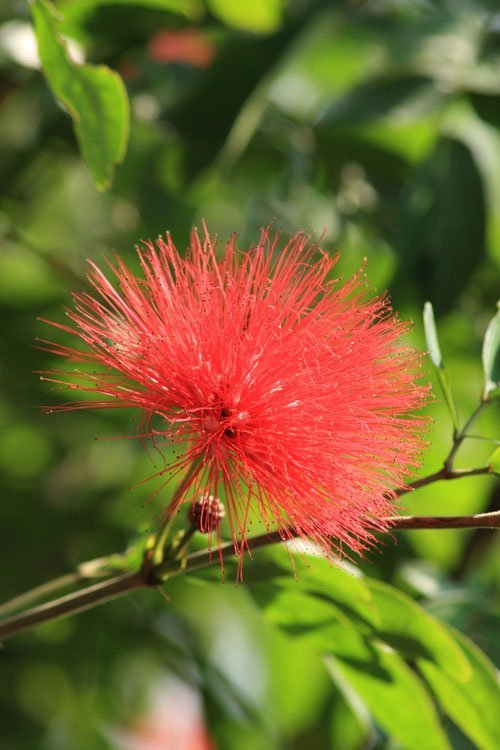
Pink Powderpuff (Calliandra haematocephala)
Native of Bolivia, the Pink Powderpuff resembles the Hawaiian ohi'a lehua. That's why in Hawaii people refer to it as “lehua haole,” meaning “foreign lehua.” The flower usually blooms in the summer and fall.
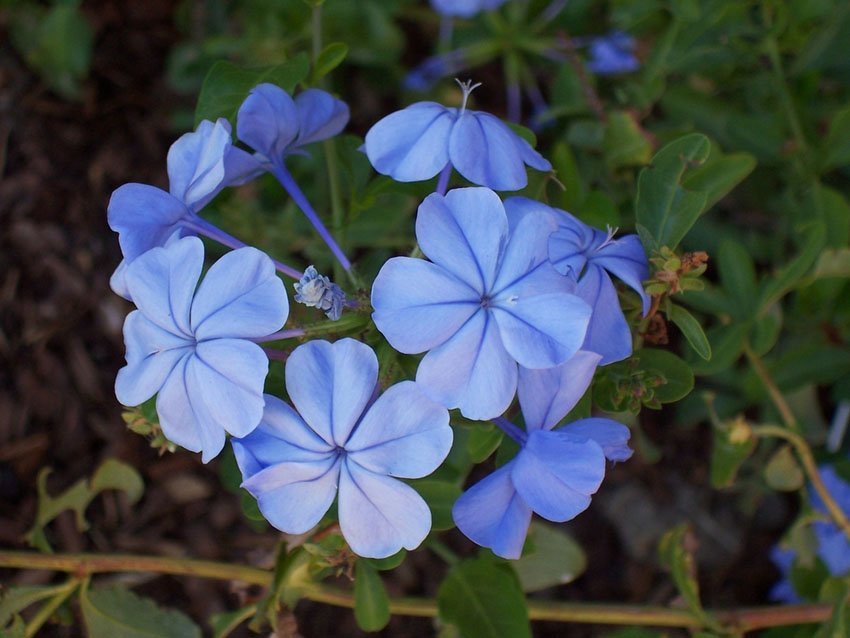
Plumbago (Plumbago auriculata)
Plumbago is known for its powdery-blue or white flowers, which are in bloom all year long. It needs little care. Plumbago is native to South Africa and in Hawaii, it is a common hedge plant.

Plumeria (Plumeria, various names)
Plumeria is one of the most popular flowers in Hawaii. It is commercially grown for the flower lei industry. They have a sweet scent and their blossoms can easily be put on a string, making them perfect lei flowers.

Poinsettia (Euphorbia pulcherrima)
Poinsettias are widely known as the “Christmas” flower of Mexico. It is a popular potted plant. In Hawaii, poinsettia also grows in gardens and up to a height of 12 feet (3.7 m). It blooms from November through March.
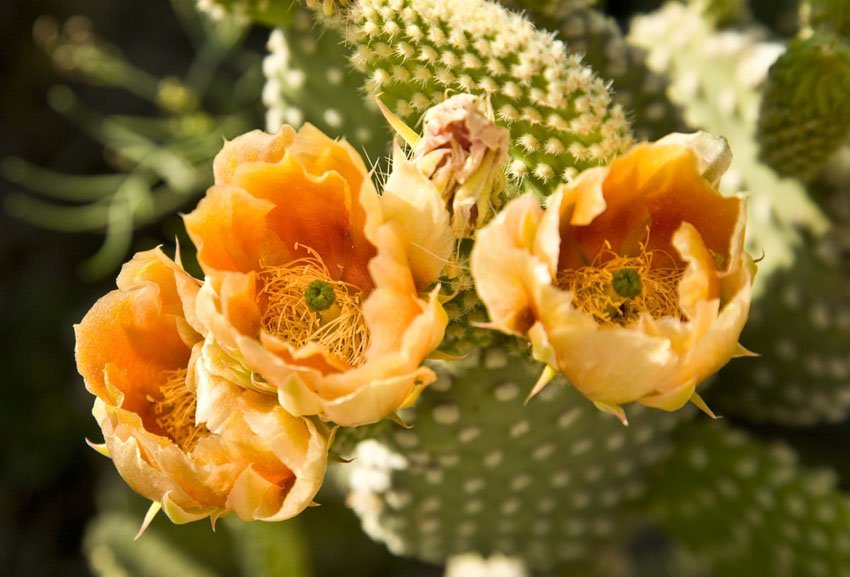
Prickly Pear (Opuntia ficus-indica)
This plant is an unusual sight for many visitors to Hawaii, who are expecting colorful blossoms like hibiscus and plumeria. The prickly pear is a tree-sized cactus. Its Hawaiian name is Panini, meaning “very unfriendly wall.
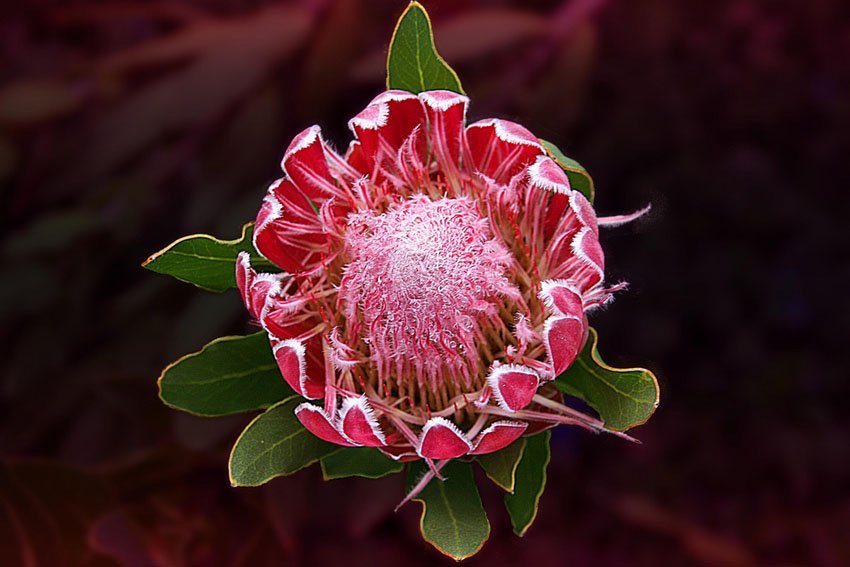
Protea (Proteas, various names)
Proteas are very sturdy flowers that last for a long time when arranged in a vase. They look nice for weeks and even keep their form when dried. The plant's native habitat is South Africa and Australia.

Queen Emma Lily (Crinum augustum)
This flower is associated with Hawaiian royalty. Queen Emma was the wife of King Kamehameha IV. This plant was one of Queen Emma's favorites. It is native to Mauritius and the Seychelles.
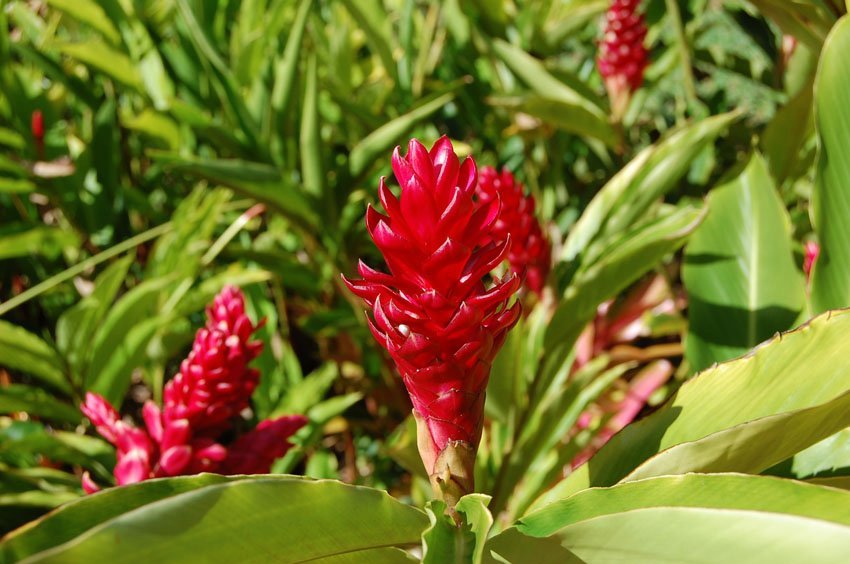
Red Ginger (Alpinia purpurata)
Red Ginger is sometimes called Pink Cone Ginger or Ostrich Plume. It is a native Malaysian plant with bright red bracts. These look like the bloom, but the actual flower is the small white flower at the top.

Shrimp Plant (Justicia brandegeana)
The Shrimp Plant is known for its interesting blossoms, which overlap and have an intense orange-red color. The flowers form a curving spike and are up to 4 inches (10 cm) long.
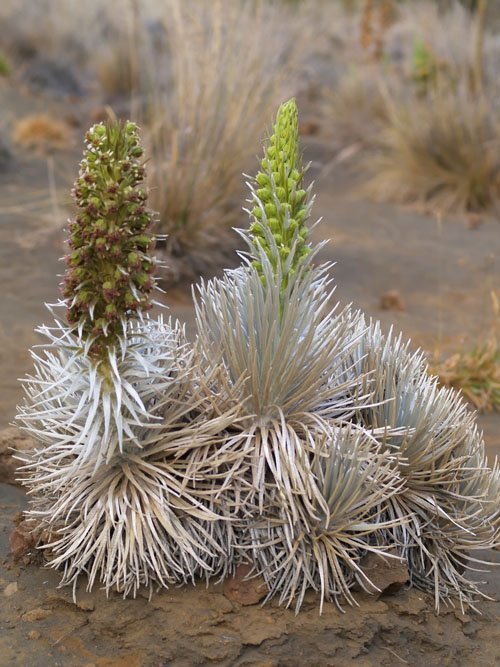
Silversword (Argyroxiphium sandwicense)
The silversword is a unique Hawaiian plant. It is endemic to Maui's Haleakala and the Big Island's Mauna Kea regions and grows nowhere else in the world. The silversword blooms just once in its life.
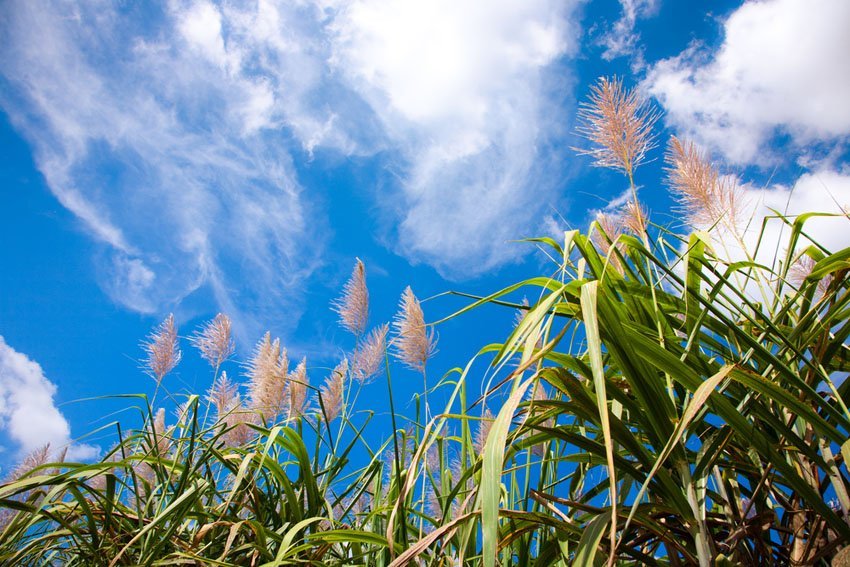
Sugarcane (Saccharum officinarum)
Sugarcane is a large grass and the source of sugar. When the early Polynesians traveled to Hawaii in their canoes, they brought sugarcane with them. Their general name for this plant was “ko,” but they had names for 40 different varieties.
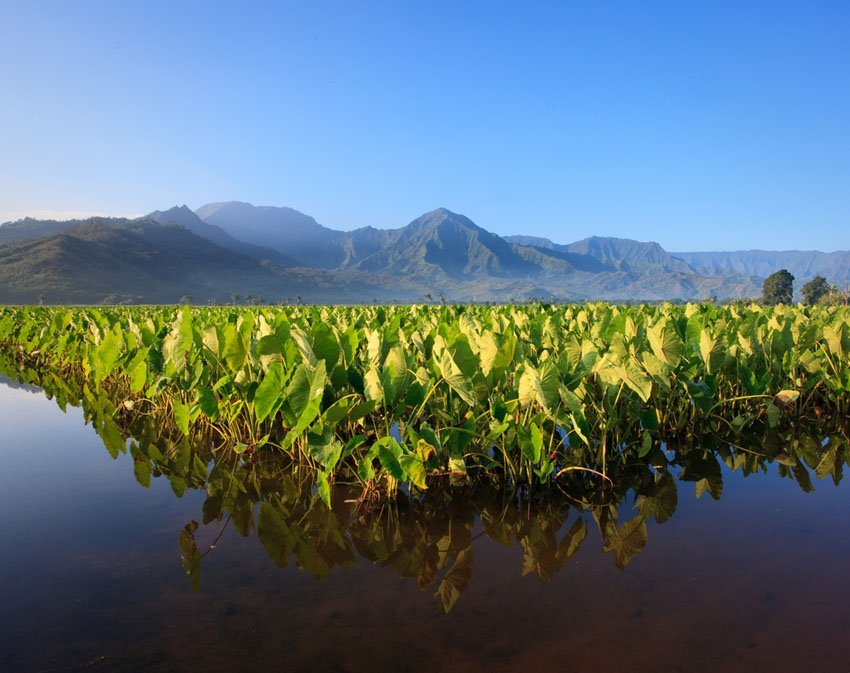
Taro (Colocasia esculenta)
Taro was an important plant for the ancient Hawaiians. It was a main staple. All parts of this marsh plant are edible, from the starchy root to the spinach-like leaves. The root is cooked and pounded into poi.

Ti (Cordyline fruticosa)
Ti was widely used by the ancient Hawaiians. It is easy to grow, very versatile and was used for making roofs, ropes, sandals and clothing. In the kitchen, ti leaves can be used as food wraps, plates and cups.
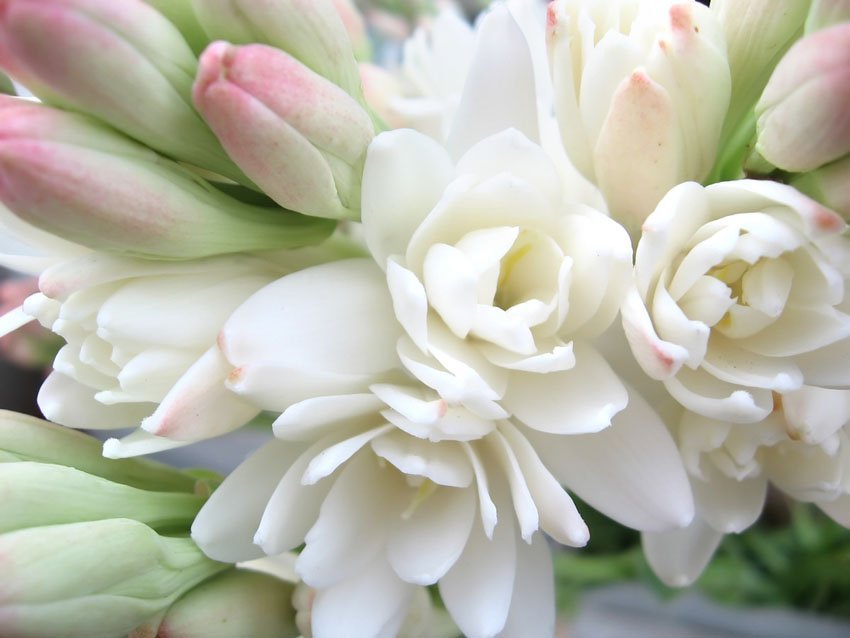
Tuberose (Polianthes tuberosa)
Known for its pleasant scent, tuberose have cream-colored blossoms which in Hawaii are used for flower lei making. They are also sold as cut flowers. Tuberose prefers moist soil and grows from underground stems.

Turks Cap (Malvaviscus arboreus)
This tall shrub is known for its bright scarlet flowers. It is a relative to the hibiscus, but with the difference that its flowers stay closed. Its petals are rolled up into a tube.
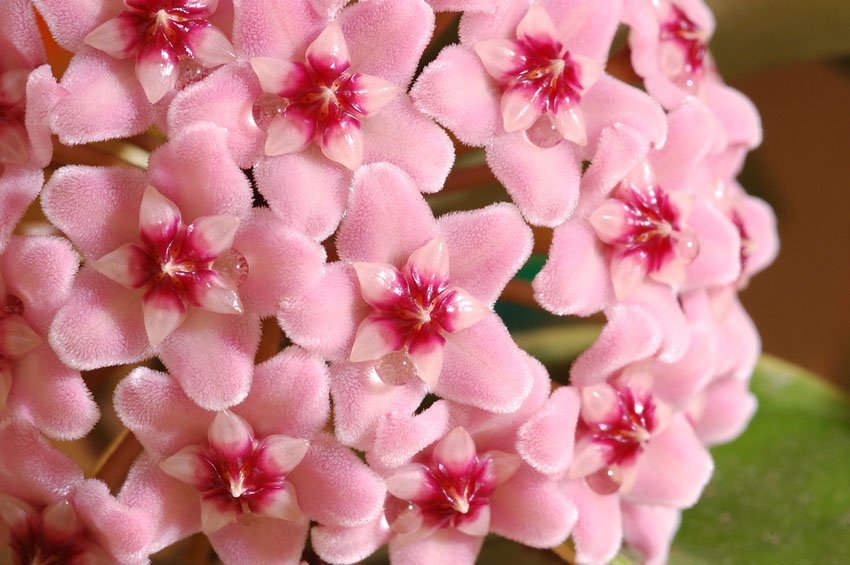
Wax Vine (Hoya carnosa)
Wax vine has interesting, fragrant blossoms that look soft and velvety to the touch. They are pink and white in color and the plant has thick leaves. The vine, however, is rather delicate and needs support to grow.










